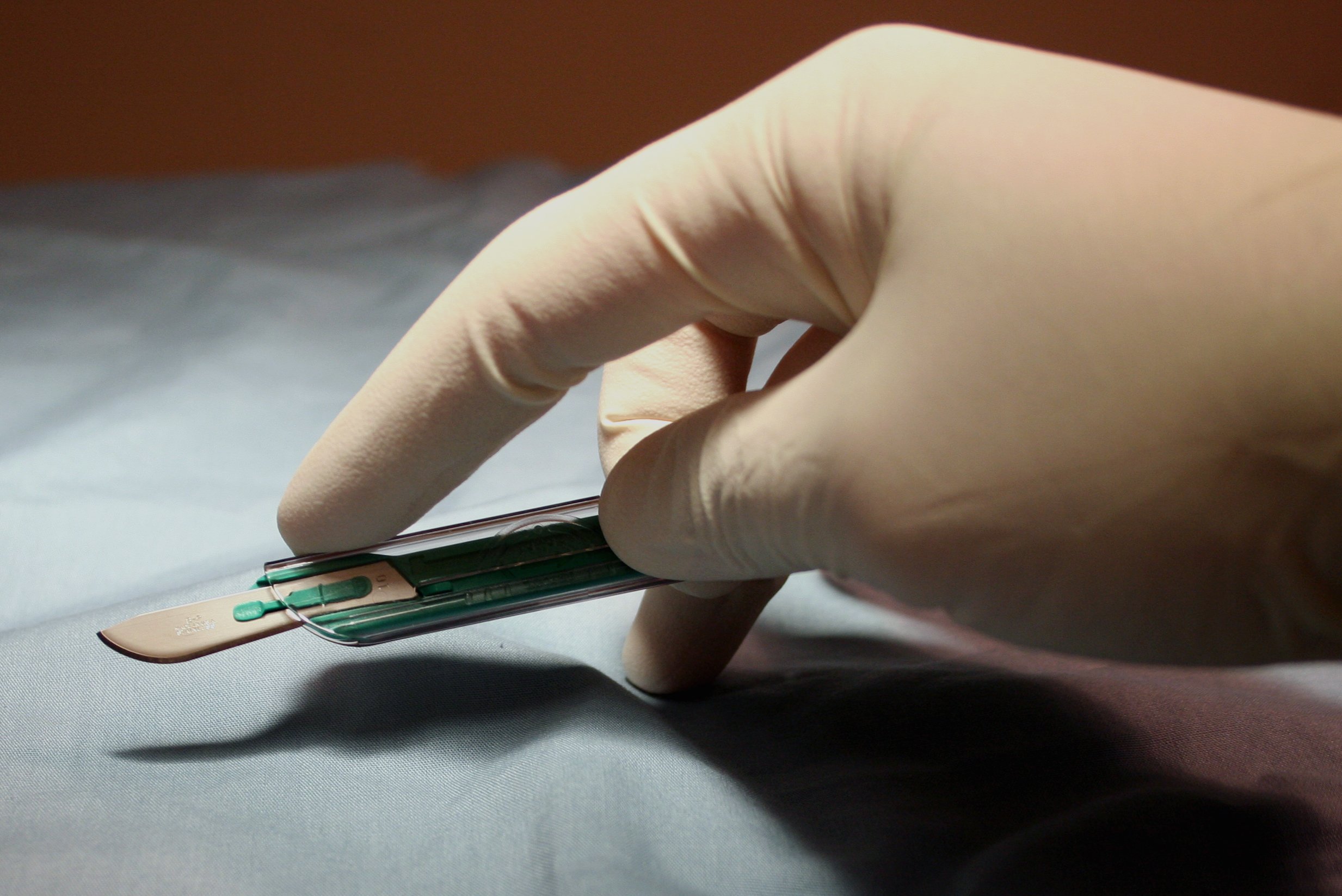
Expert Tips: How To Hold A Scalpel Skillfully
To hold a scalpel with precision is to grasp the fundamental essence of surgical artistry. The key lies in finding the perfect balance between control and finesse. Position your fingers delicately on the scalpel’s handle, allowing your hand to guide the blade with confidence. Remember, how to hold a scalpel can determine the outcome of a delicate incision. Master this skill, and you will unlock the potential to transform the human body with unparalleled skill and grace.
How to Hold a Scalpel: A Beginner’s Guide
Welcome, aspiring medical professionals! Today, we’re going to dive into one of the fundamental skills you’ll need in the operating room – how to hold a scalpel. Mastering the technique of holding a scalpel with precision and confidence is crucial for performing safe and successful surgeries. In this guide, we’ll walk you through the proper way to hold a scalpel, step by step, so you can feel confident and prepared when it’s time to scrub in.
The Importance of Proper Scalpel Handling
Before we jump into the nitty-gritty of how to hold a scalpel, let’s first understand why it’s so important to master this skill. A scalpel is a surgeon’s primary tool for making incisions during surgical procedures. Holding it correctly not only ensures the safety of the patient but also helps you work efficiently and effectively.
Improper handling of a scalpel can lead to accidental cuts, lack of precision in incisions, and overall inefficiency in performing surgeries. By learning the proper technique for holding a scalpel, you’ll be setting yourself up for success in the operating room.
Steps to Hold a Scalpel
Step 1: Establish a Firm Grip
The first step in holding a scalpel is to establish a firm grip on the handle. Hold the scalpel like you would hold a pencil, between your thumb and your index and middle fingers. The handle should rest comfortably in your hand, allowing for a stable and controlled grip.
Remember, precision is key when using a scalpel, so make sure your grip is neither too tight nor too loose. You should be able to maintain a steady hand while also having the flexibility to maneuver the scalpel as needed.
Step 2: Positioning of the Scalpel
Once you have a secure grip on the scalpel, it’s important to position the blade correctly for the type of incision you are making. The blade should be held at a consistent angle relative to the surface of the skin to ensure a clean and precise incision.
For most incisions, you’ll want to hold the scalpel at a 45-degree angle to the skin. This angle allows for optimal control and visibility while minimizing the risk of accidental cuts. Practice positioning the scalpel on a flat surface to get a feel for the correct angle before using it on a patient.
Step 3: Maintain a Steady Hand
As you prepare to make an incision with the scalpel, it’s crucial to maintain a steady hand throughout the procedure. Avoid any sudden movements or jerks that could lead to unintended cuts or uneven incisions.
Remember to breathe evenly and relax your shoulders to prevent tension in your hand. A calm and steady hand will allow you to make precise and controlled movements with the scalpel, ensuring the best possible outcome for your patient.
Practice Makes Perfect
Like any skill in the medical field, mastering the art of holding a scalpel takes practice and dedication. Take the time to familiarize yourself with the feel of the scalpel in your hand, practice making controlled movements on various surfaces, and seek guidance and feedback from experienced professionals.
By honing your technique and perfecting your grip, you’ll build the confidence and proficiency needed to handle a scalpel with precision and care. Remember, every great surgeon started as a beginner, so don’t be discouraged by initial challenges – keep practicing and striving for improvement.
Congratulations on taking the first step towards mastering the essential skill of holding a scalpel. By following the steps outlined in this guide and dedicating time to practice and refinement, you’ll be well on your way to becoming a skilled and competent surgeon.
Remember, patient safety and surgical success depend on your ability to handle tools like the scalpel with precision and care. So, keep practicing, stay focused, and always strive for excellence in your medical journey. Good luck!
Thank you for reading our comprehensive guide on how to hold a scalpel. We hope you found it informative and engaging. If you have any questions or would like to share your experiences with scalpel handling, feel free to leave a comment below. Happy scalpel handling!
How to Hold a Surgical Scalpel #goodtoknow #surgery #vet #medicine #surgeon #surgeonlife
Frequently Asked Questions
How should I hold a scalpel properly?
To hold a scalpel correctly, grasp the handle between your thumb and index finger, ensuring a firm grip but also allowing for precise movements. Your middle finger can support the side of the handle for stability. Keep your wrist steady and aligned with your forearm to maintain control while making precise incisions.
What is the recommended hand positioning when using a scalpel?
When using a scalpel, it is essential to position your hand in a way that allows for both accuracy and safety. Place your dominant hand slightly above the area you intend to cut, with the blade facing downwards. This stance provides a clear view of the incision site and enables controlled cutting motions.
How can I ensure a steady hand while wielding a scalpel?
To maintain a steady hand while using a scalpel, it is crucial to relax your shoulders and arm muscles. Avoid gripping the scalpel too tightly, as this can lead to shaky movements. Instead, focus on controlled breathing and maintaining a stable posture to enhance precision and reduce the risk of accidental slips.
Final Thoughts
In summary, holding a scalpel correctly is crucial for successful surgical procedures. Proper grip and technique can enhance precision and reduce the risk of errors. Remember to hold the scalpel with a firm yet gentle grip, ensuring control and accuracy. Practice and attention to detail are key in mastering the art of how to hold a scalpel effectively.


